MAMBO as a Platform for Promoting Colombian Art: Insights from the Archive
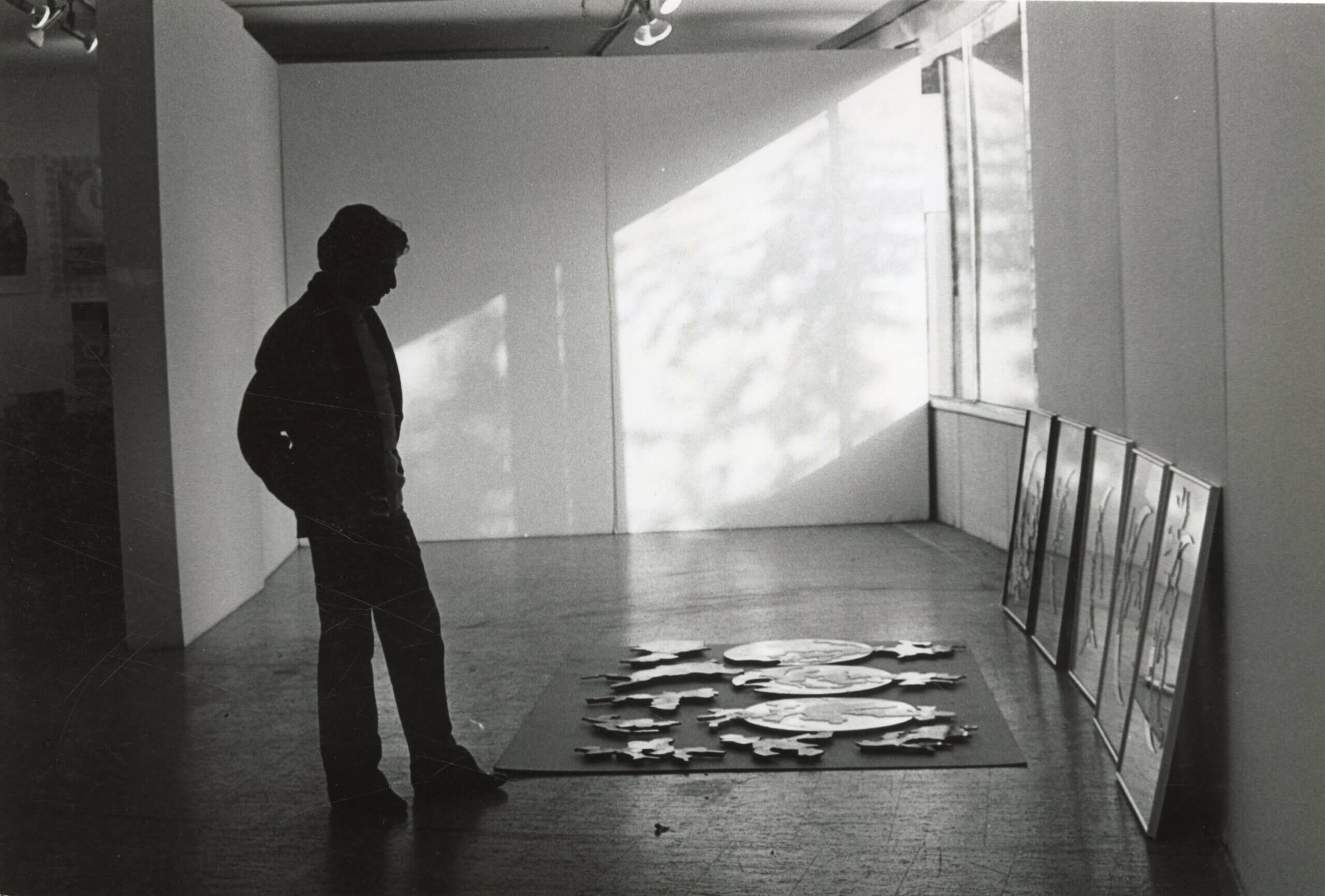
Photograph of the setup for the IV Atenas Salon (1979). Photo by Oscar Monsalve.
This section is presented as part of the research project Digital Futures in Museum Practices*, which explores contemporary museum practices with a special focus on the use of digital tools.
Article by: Juanita Bayona
The original version of this article is in Spanish. Click here to read the article.
On November 20, 1962, the Bogotá Museum of Modern Art opened to the public, and Marta Traba was appointed its first director. She was a recognized art critic and one of the most prominent art historians in Colombia during the 20th century. Traba’s interest throughout her career in promoting new Colombian art was a seed she planted in the Museum. In her role as a lecturer at the Universidad de los Andes, she recognized the potential of the new generation of artists. Among her students were Luis Caballero, Beatriz González, Luciano Jaramillo, Juan Antonio Roda, and many others, for whom she later created a space within MAMBO, as well as other notable artists such as Bernardo Salcedo, Enrique Grau, Jim Amaral, and Olga Ceballos de Amaral.
Shortly after her appointment, Marta Traba was expelled from the country by the DAS due to political differences. Although her exile did not happen due to the support she received, she made the personal decision to leave the country in 1969, leaving room for Eduardo Serrano to take on this role. Until then, he had mainly worked in private galleries, and in 1974, he was appointed curator of the Museum. Over time, the artists promoted by Traba gained significant recognition and became the main figures in the artistic scene, which concerned the new generations of artists due to the monopolization of cultural spaces. In response, Serrano began to include new artists with more conceptual and experimental inclinations, which was crucial for the development and renewal of “Contemporary and Conceptual Colombian Art.”
Serrano’s concern for diversifying the scene began even before he was appointed curator of the Museum. He took advantage of the invitations from Gloria Zea to establish a series of exhibition cycles specifically dedicated to new Colombian talents: New Names in Colombian Art (1972) and the Atenas Salon (1973-1984).
From the Research Center, we delve into the archive to discover more about these two spaces promoted by MAMBO:
Nombres nuevos en el arte de Colombia [New Names in Colombian Art]
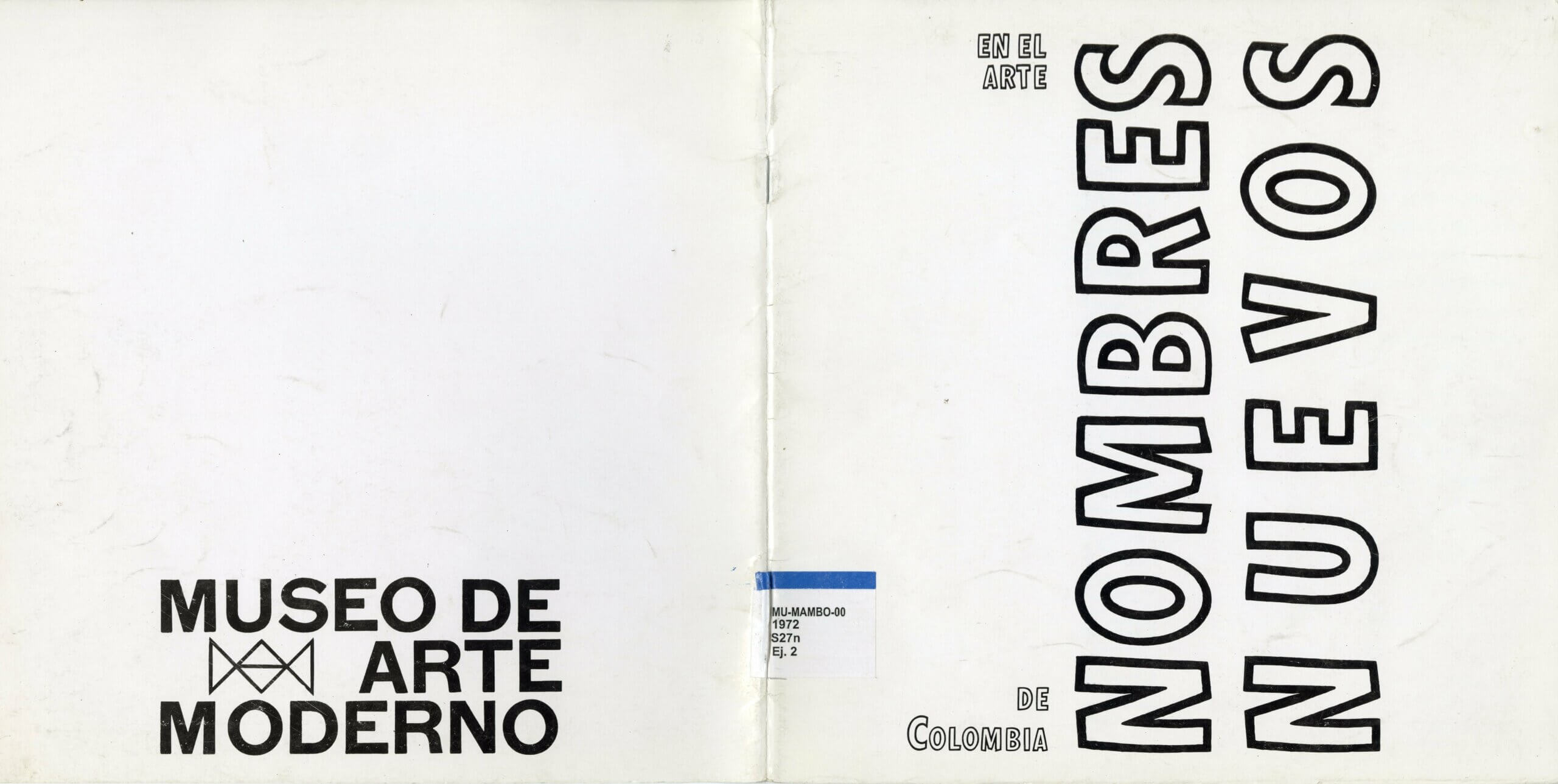
Cover and back cover of the exhibition catalog from 1972.
In March 1972, a group of 12 “new” artists exhibited at MAMBO, including Edgar Alvarez, Ever Astudillo, Antonio Caro, Miguel Antonio Castillo, Maria de la Paz Jaramillo, Oscar Muñoz, Hector Fabio Oviedo, Carlos Padilla, Jorge Posada Morris, Miguel Ángel Rojas, Juan Camilo Uribe, and Hans Wienand Payan. All of them were Colombians with careers that were still relatively unrecognized at the time. Although they had participated in some group exhibitions, they had not been part of such an important show as New Names. MAMBO’s effort was crucial for the growth of these artists’ careers, as they were not only given exhibition space but also their works were carefully studied and theorized, preventing them from being viewed superficially. In Serrano’s words:
“The achievements and direction of each of these works must be measured carefully. To do so with some objectivity, one must take into account the emerging trajectory of their creators. However, to delve into the arguments of this exhibition, it is not enough to verify promising signs. The Bogotá Museum of Modern Art proposes that we decide for ourselves whether there is a change in the concept of ‘art’ among the new generations of Colombia; that we establish whether alterations have occurred in our Society, which are a prerequisite for stylistic shifts… and that we determine whether valid works can arise from individual, voluntary changes within the framework of already established and classified languages.”
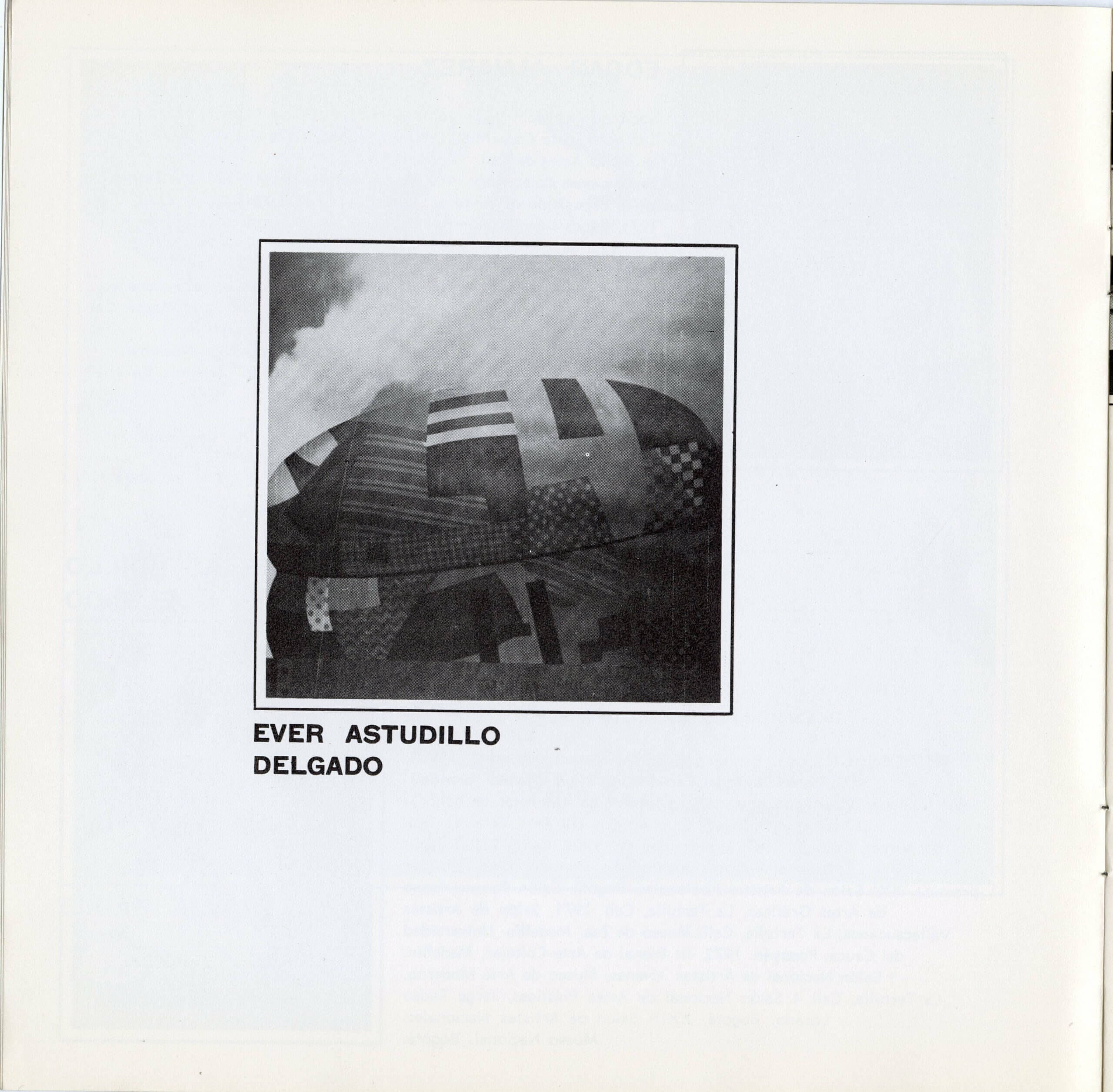
One of the artists who participated in the exhibition was Ever Astudillo, of whom we found more material in the Museum’s archive. This allows us to trace in which other spaces he exhibited years later, likely due to his initial recognition by MAMBO.
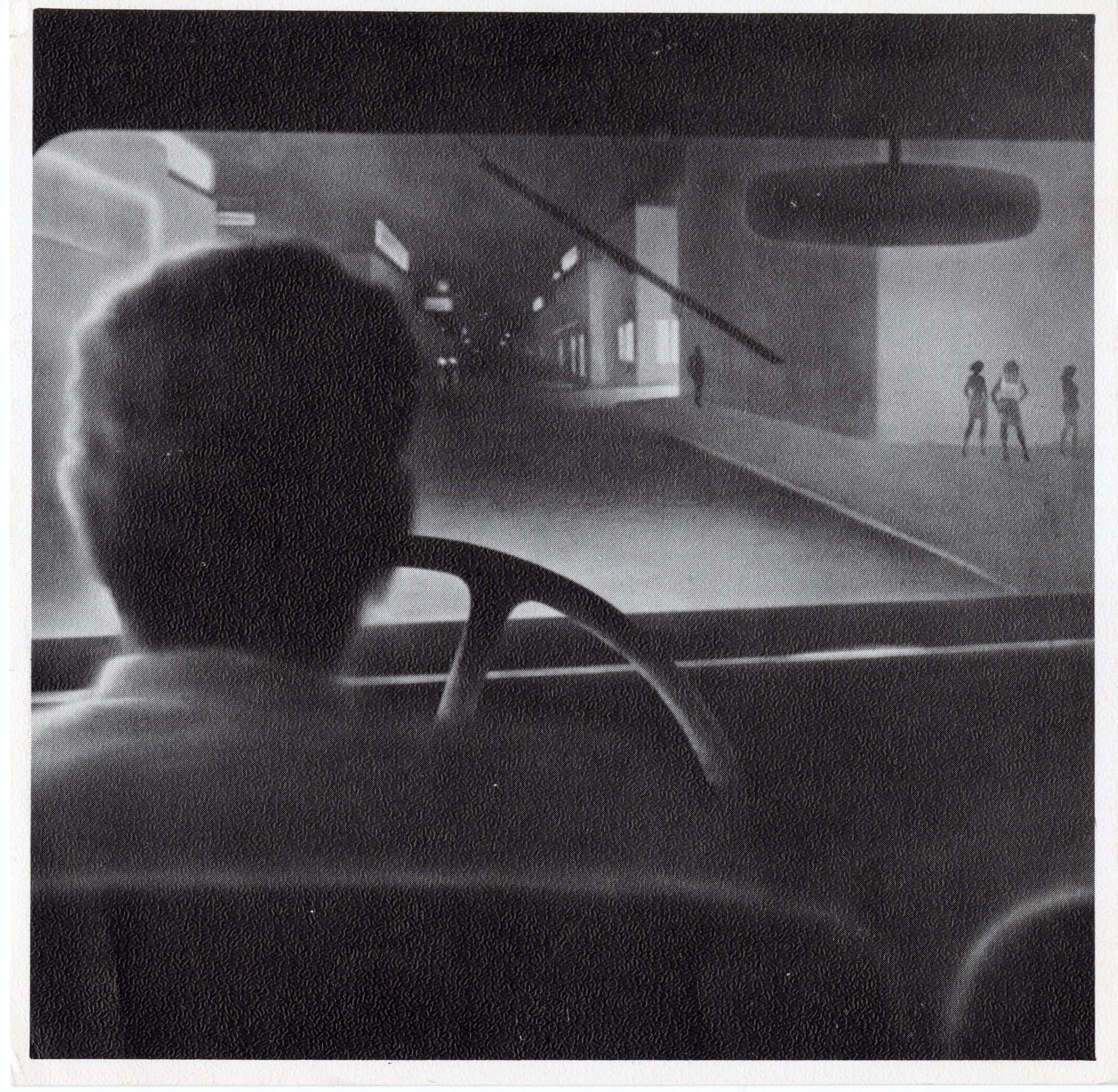
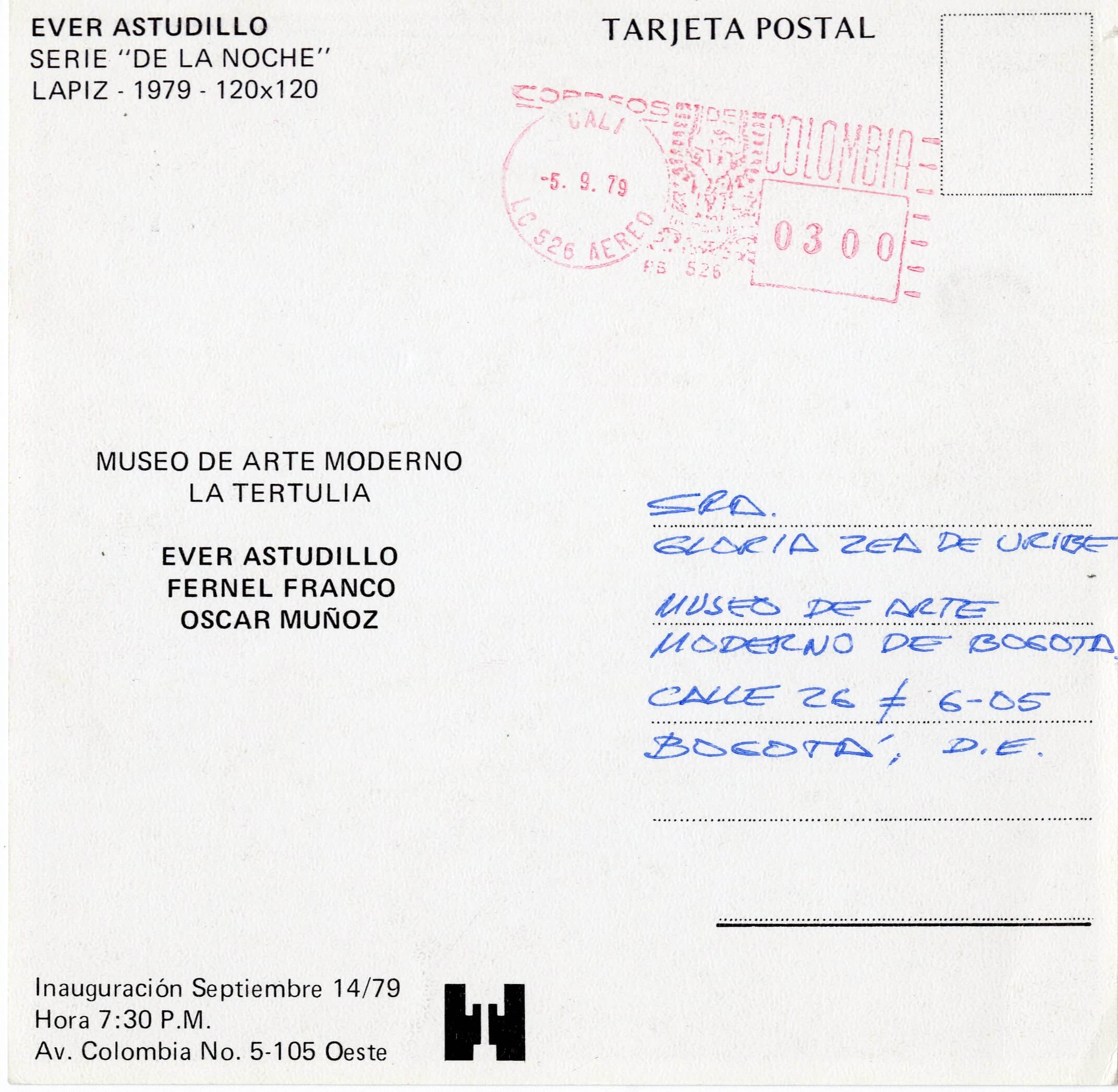
Exhibition postcard of Astudillo at the Museo de la Tertulia, 7 years later.
Atenas Salon
The Atenas Salon was an annual event inaugurated in 1975, which included 9 editions. The salons featured artists from across the country, who were invited to present their recent works at the Museum. Thus, new themes for the time, such as gender, ecology, and politically charged works, became part of MAMBO’s history.
The use of new media was welcomed, as was the experimentation with new concepts, making the Atenas Salon a crucial space for the consolidation of contemporary art in the country.
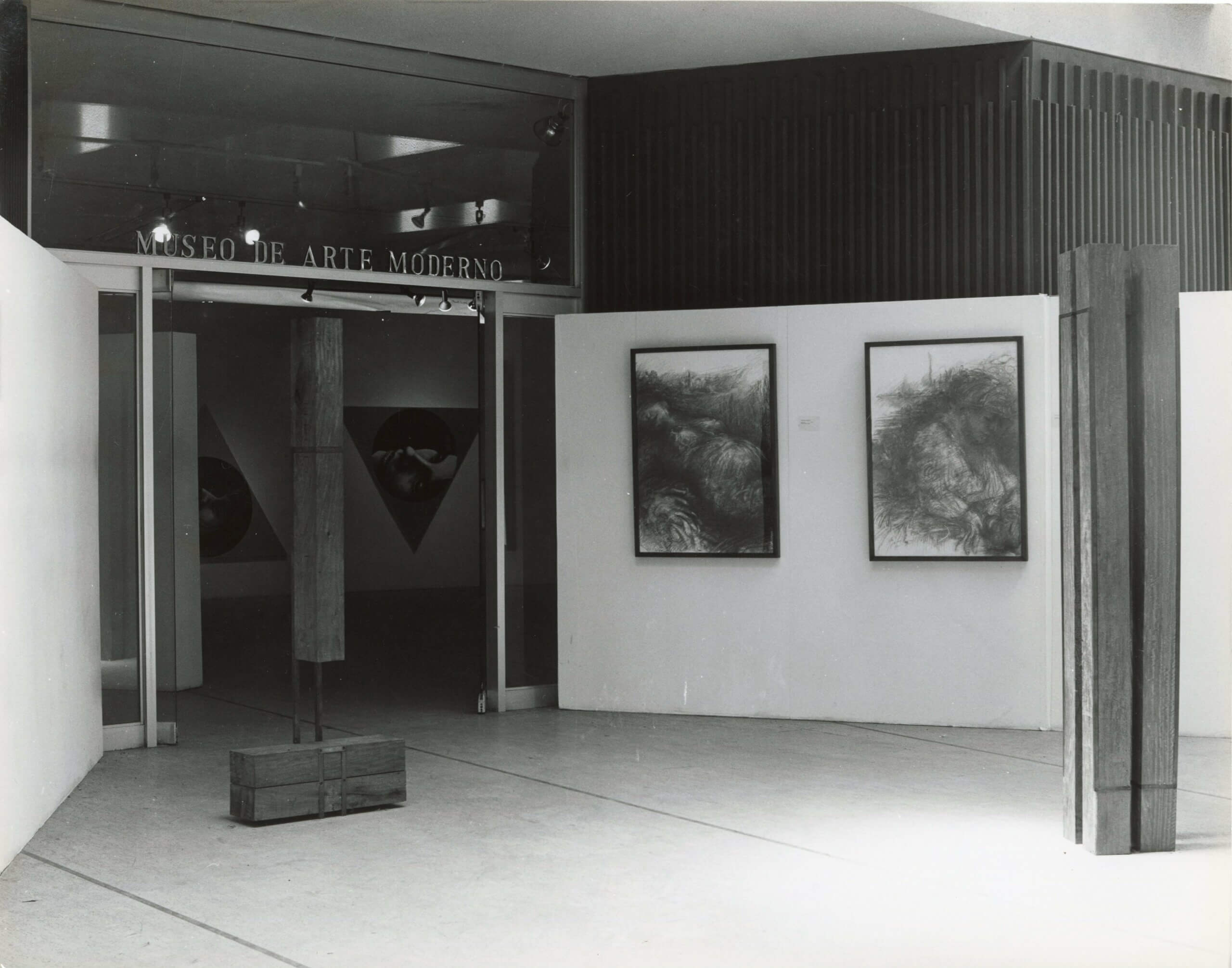
View of the III Atenas Salon exhibition (1978). Photo by Oscar Monsalve.
The Salon was an immensely innovative space, not only for the inclusion of new names but also for the incorporation of new artistic media, such as photography, video art, installation, and performance.
Photographers such as Luz Helena Castro, Camilo Lleras, Omaira Abadía, Oscar Monsalve, and Tina Samper demonstrated the artistic potential of photography. Geo Ripley, Sara Mediano, Rodrigo Castaño, and Patricia Restrepo showcased their video art works. Natalia Rivera, Miguel Ángel Rojas, Alicia Barney, and Alberto del Castillo transformed the Museum with their installation projects. Rosa Navarro and María Evelia Marmolejo exhibited documentation of some performative actions.
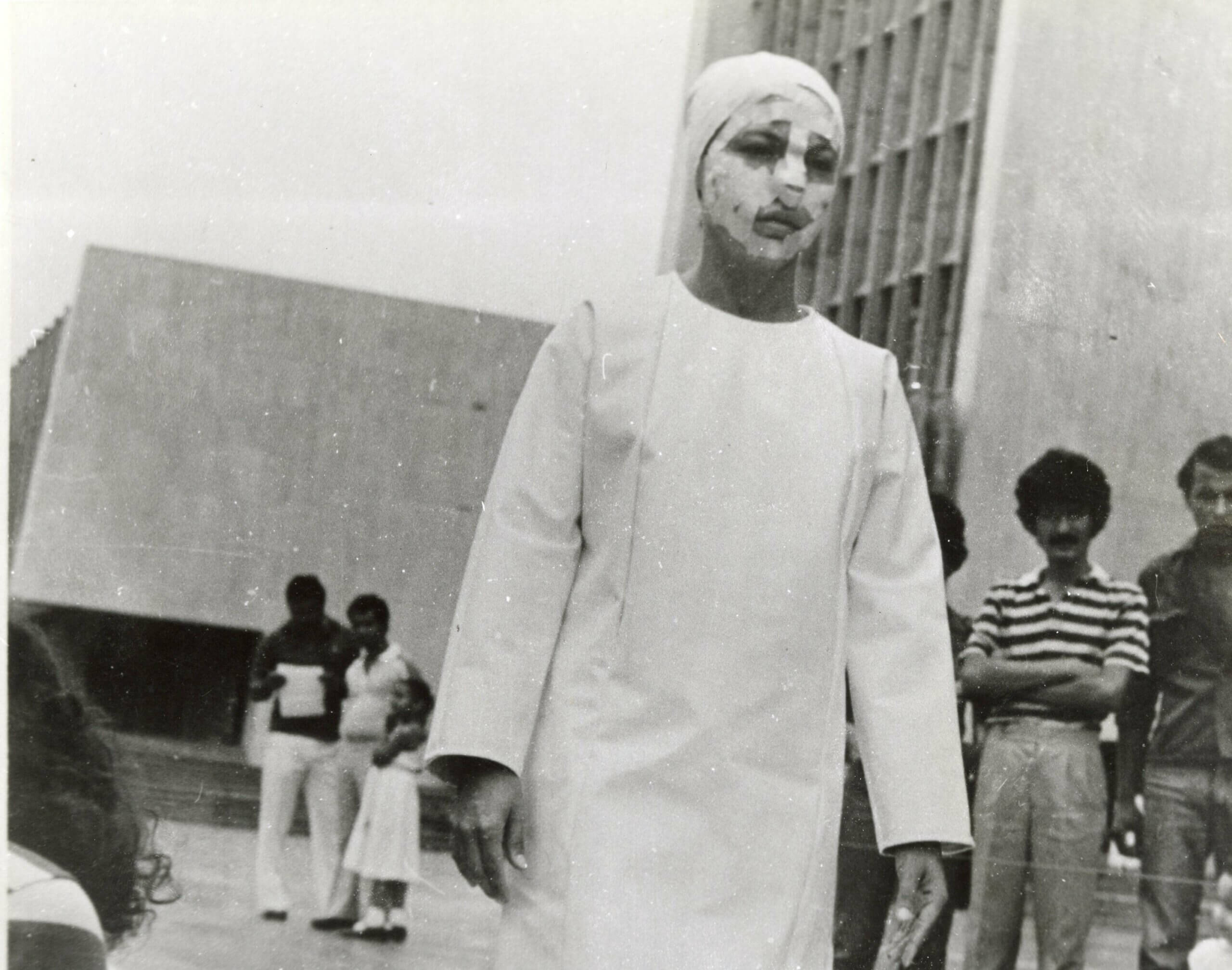
Maria Evelia Marmolejo performing her first action, Anónimo 1 (1981), executed in the courtyard of the Municipal Administrative Center of Cali. Dressed in a tunic, Marmolejo installed a line of white paper and, after making cuts beneath her toes, walked on the paper, leaving imprints of blood along the way. Re-photograph by Oscar Monsalve; the original is by Fabio Arango.
Thus, it is important to acknowledge the significance of both exhibition spaces: on one hand, the diversification of the names included within the Museum in New Names in Colombian Art (1972), and on the other, the first curated event in the country, which has been considered one of the precursors to the Bogotá Art Biennial, the Atenas Salon (1973-1984).
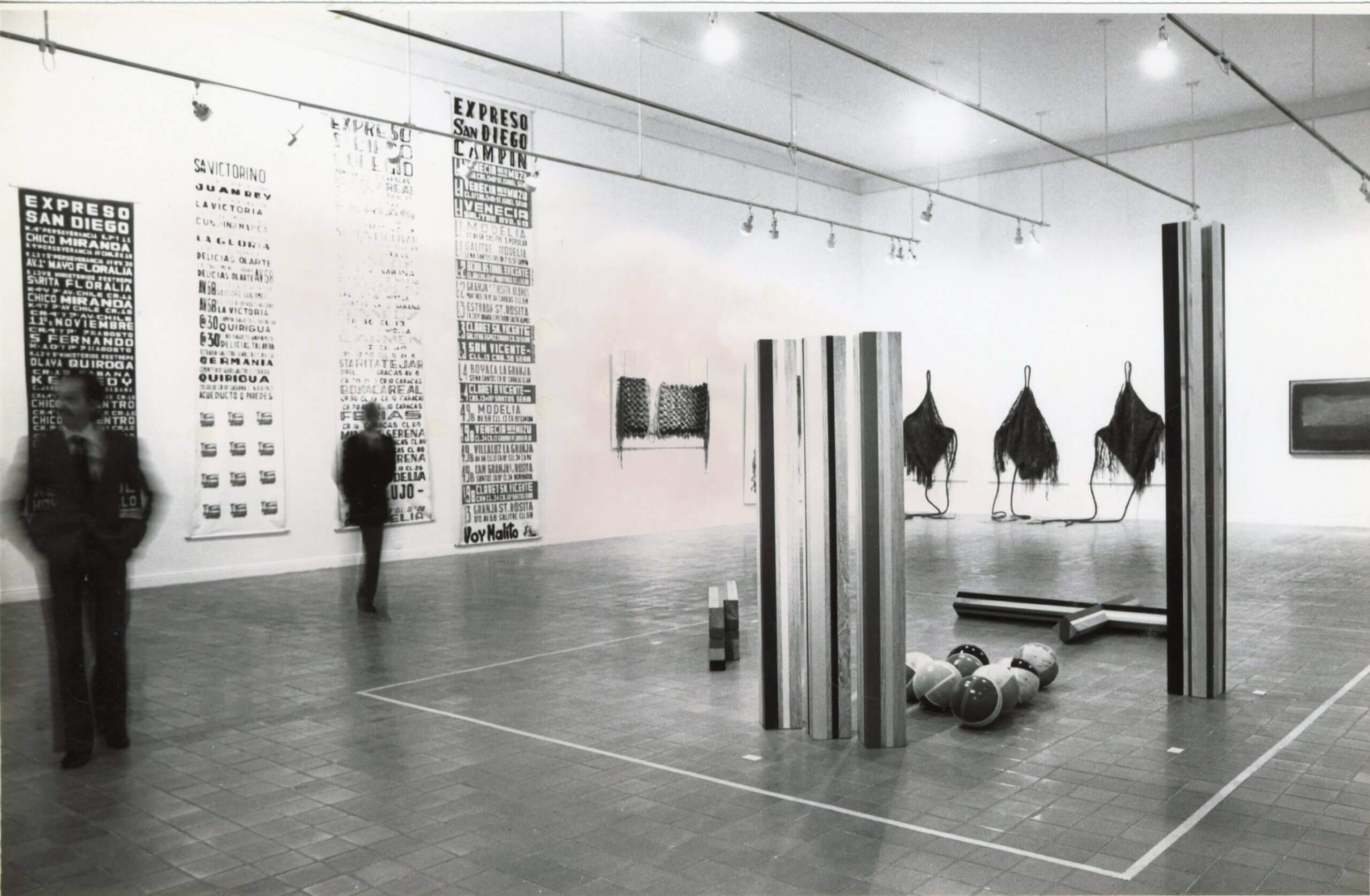
Installation view of the VII Atenas Salon exhibition (1982), where the interest in new means of expression such as installation and graphics is evident.
References
[1] Franco, Ana María. “Presentación” en Historia abierta del arte colombiano, (Bogotá: Instituto colombiano de cultura, 2016), 10.
[2] BADAC. “Marta Traba 4 veces”, consultado el 16 de septiembre de 2023, https://badac.uniandes.edu.co/martatraba/.
[3] Serrano, Eduardo. “¿Qué es el arte nuevo? en Nombres nuevos en el arte de Colombia, (Bogotá: Museo de arte moderno de Bogotá, 2003), 4.
[4] Ibid, 5.
[5] Zea, Gloria. “Presentación” en Los salones atenas en la colección del Museo de arte moderno de Bogotá, (Bogotá: Museo de arte moderno de Bogotá, 2003), 8.
*Digital Futures in Museum Practices is a research project led by Susana Vargas-Mejia and supported by the New Frontiers in Research Fund of the Government of Canada [NFRF-2022-00245].

